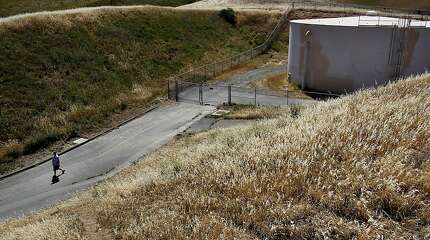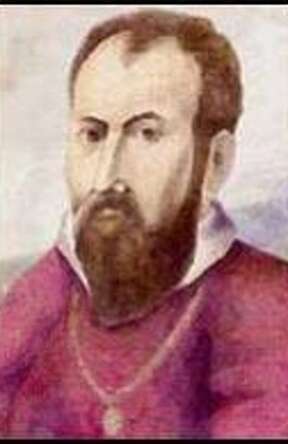Lesser-known explorer Crespi gets noticed
May 3, 2013
At noon, April 2, 1772, Father Juan Crespi stood on a sun-blasted hilltop in Bay Point and gazed out at the shimmering expanse of water before him.
"He said, 'Oh my God - I have found a shortcut to the Colorado River! It's the Northwest Passage!' " recounted historian Dean McLeod. "He thought he had finally found the great inland waterway everyone had been looking for."
In fact, Crespi was looking at Suisun Bay. But his observations, forwarded to Father Junipero Serra and the King of Spain, were the inspiration for subsequent explorations of the Bay Area and constitute some of the earliest, most detailed descriptions of California before Europeans arrived en masse.
Crespi is usually upstaged in the history books by Serra and Captain Juan Bautista de Anza, but now Bay Point residents, joined by the Spanish consul general, are trying to bring Crespi some overdue glory.
Plans are under way to erect statues of Crespi, his crew and California's native inhabitants on the Bay Point hilltop where he's thought to have stood. Led by the Bay Point Historical Society, organizers have received approval from a dozen or so agencies, including the Contra Costa Board of Supervisors and local schools, and are now raising funds to commission the statues and educational panels.
The monument would be visible from Highway 4 and much of Bay Point, an unincorporated area just west of Pittsburg. It would replace a haphazard 4-foot rock monument that sits atop the hillside now, which is so crumbled and graffiti-covered that no one appears to know who built it or when, or what it even commemorates.
Time for that to change, McLeod said.
"This place might look nondescript - it's not a tourist attraction - but it's a fascinating piece of ground," McLeod said. "A very important chapter of history happened here."
Crespi was a young Franciscan priest stationed in Mexico when the King of Spain sent him and his crew north to explore California in the 1770s. European explorers had been visiting California for at least 150 years, but exploration had tapered off due to a series of shipwrecks and the area's isolation.

Brant Ward, The Chronicle
The monument to the sometimes-overlooked Crespi, amid rolling golden hills, would be visible from Highway 4 and much of Bay Point in the East Bay.
But the Russians were foraying south along the California coast, and the hunt for gold was ramping up in Spain. So they decided to take another look at their holdings north of modern-day Mexico, historians said.
"California was too remote, and they could never attract settlers. But by the mid-18th century the Spanish knew they had to use it or lose it," said Glen Gendzel, a California history professor at San Jose State University.
So Crespi's party was among the first dispatched north, predating de Anza's landmark expedition by four years.
California was a busy place in the 1760s. Up to 500,000 people lived here, making it among the most populated and diverse spots in North America. Crespi's descriptions are the first detailed account of the indigenous people before the deluge of Spanish missionaries and settlers, which eventually decimated the American Indian population.
"Crespi's diaries are crucial early records of native Californians - what they ate, how they dressed, how they acted," Gendzel said. "It's priceless stuff."
It was also the beginning of the end for most of the American Indians, many of whom died of smallpox or were killed by settlers. Any tribute to Crespi should include hefty input from American Indians, Gendzel said.

Brant Ward, The Chronicle
Father Juan Crespi left his mark on California.
McLeod and the Bay Point historians agree. Crespi's story is complex and nuanced, but deserves to be told.
"You cannot possibly understand what's happening in California today without understanding our history," McLeod said. "People think everything happening in California is brand new. But the conflicts, the personalities - it's all happened before."
Read more: http://www.sfchronicle.com/bayarea/article/Lesser-known-explorer-Crespi-gets-noticed-4484172.php#ixzz2SMNS0pyE

No comments:
Post a Comment